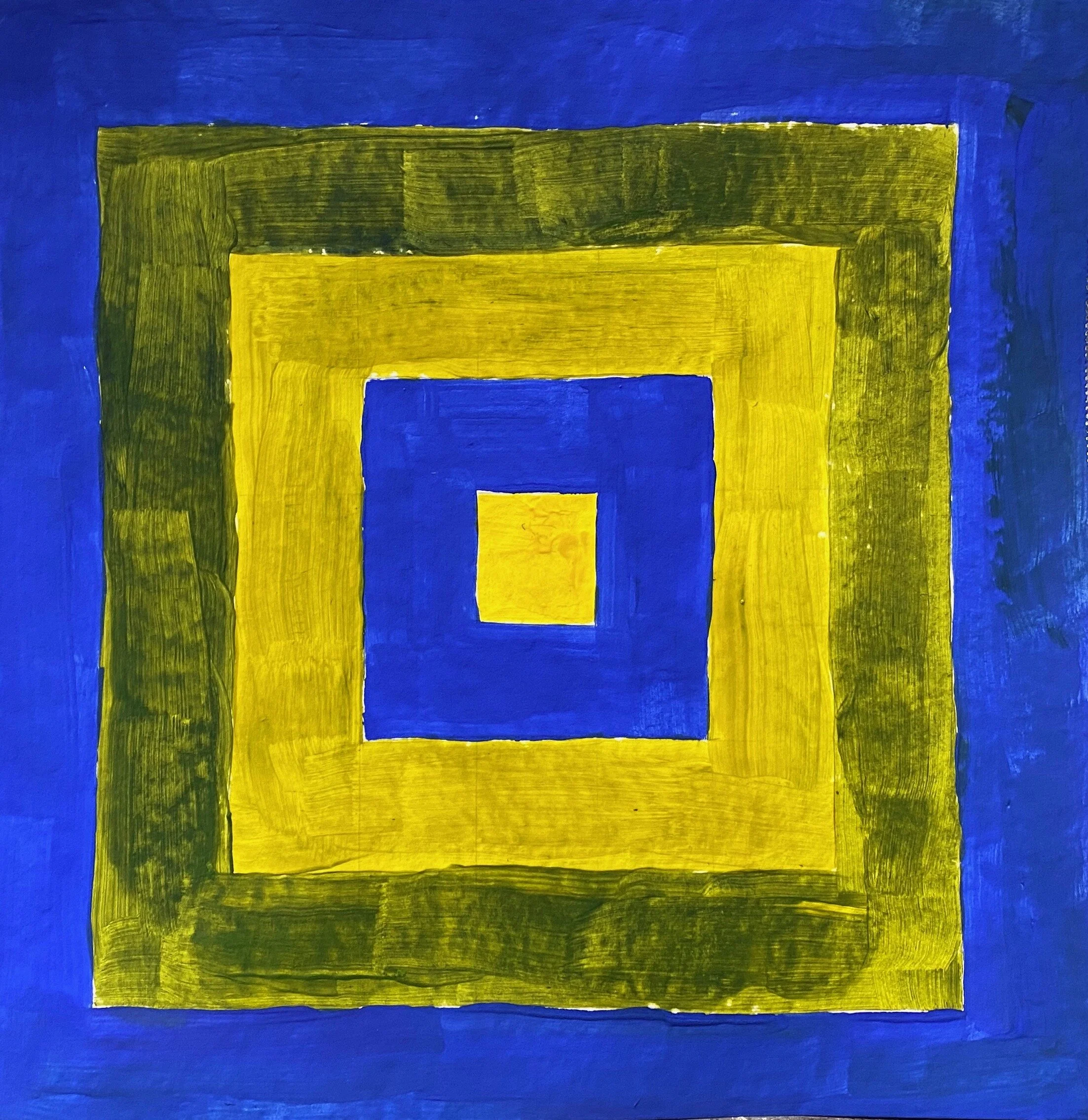Color Mixing: Intermediate
Summary
Painting
Understanding color is foundational to any artistic practice. Through this project artists will learn to mix all of the colors they need to paint a rainbow using only the primary colors. It is important not only to be able to mix all of these colors, but to be able to talk about the colors you are using. Students will be using primary colors to create the secondary colors, and should be able to identify them within their painting.
Essential Terms
Achromatic: a color that lacks hues (example: white, grey and black)
Aggressive (warm): Reds, Oranges, and Yellows
Analogous: any one of a group of related colors that are near each other on the color wheel (red, orange and yellow)
Chroma: refers to the degree of vividness of a color, or how pure it is compared to its representative on the color wheel
Concentric: Shapes that share the same center
Hue: gradation of color
Intensity: refers to the degree of purity of a color. Colors are at their purist when they are straight out of the tube, not mixed with another color.
Monochromatic: a painting or drawing that uses only one color and its variations (tints or shades)
Primary Colors: any of a group of colors from which all other colors can be obtained by mixing
Receding (cool): Blues, Greens, and Violets
Secondary Colors: a color resulting from the mixing of two primary colors
Shade (black): mixture with black, which increases darkness
Tertiary: a color produced by an equal mixture of a primary color with a secondary color adjacent to it on the color wheel
Tint (white): a mixture of a color with white, which reduces darkness
Tone (grey): refers to the light and dark values used to render a realistic object
Value: defined as the relative lightness or darkness of a color
Objectives
Students will be able to mix all secondary and tertiary colors from primary colors.
Students will be able to create a composition using an analogous color scheme.
Students will be able to define and identify the terms listed above.
Master Artist / Historical References
Frank Stella, WWRL
Age Level(s)
10 - 14 years old
Needed Materials
Acrylic Paint
9 x 12" Heavy Paper (80 Lb Plus)
Learning Path
Beginner
Intermediate
Downloads
Project Instructions (PDF)
Attributions
Virtual Learning Project Developer: Augustine Smith
Curriculum Developer: Tamah Minnis
Step 1
Set up your station, including laying out your primary colors on your pallet and any other materials you need. The primary colors are red, blue, and yellow.
Step 2
Create a set of concentric shapes on your paper. We have used a ruler to create concentric squares moving towards the edge of the paper.
Step 3
Use these primary colors to mix an analogous color scheme. In our example, we have mixed the secondary color green and the tertiary colors yellow-green and blue-green.
Step 4
Use the colors you have mixed to fill in the shapes, creating your very own Stella inspired masterpiece.
Step 1
Step 2
Step 5


